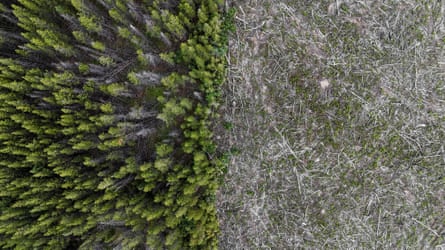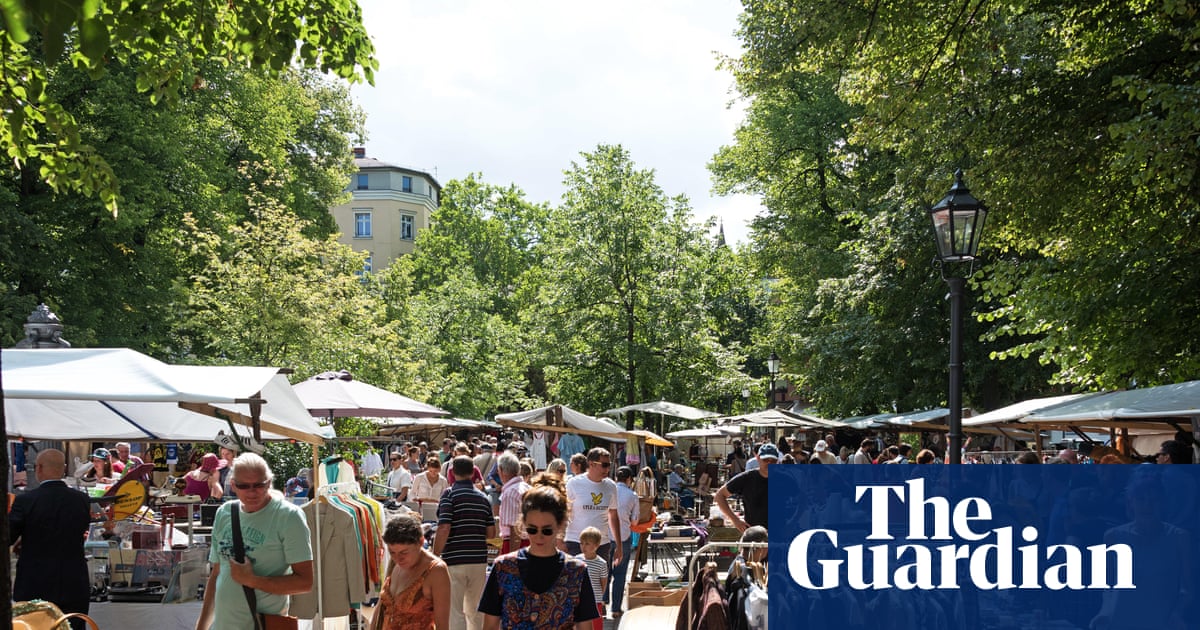Drax power plant has continued to burn 250-year-old trees sourced from some of Canada’s oldest forests despite growing scrutiny of its sustainability claims, forestry experts say.
A new report suggests it is “highly likely” that Britain’s biggest power plant sourced some wood from ecologically valuable forests as recently as this summer. Drax, Britain’s single biggest source of carbon emissions, has received billions of pounds in subsidies from burning biomass derived largely from wood.
The report, by Stand.earth, a Canadian environmental non-profit, claims that a subsidiary of Drax Group received hundreds of truckloads of whole logs at its biomass pellet sites throughout 2024 and into 2025, which were likely to have included trees that were hundreds of years old.
The report could raise fresh questions for the owner of the North Yorkshire power plant, which has been forced in recent years to defend its sustainability claims while receiving more than £2m a day in green energy subsidies from UK bill payers.
The report’s findings suggest that the power plant was burning “irreplaceable” trees even as its owners lobbied the UK government for the additional green energy subsidies, which were granted earlier this week.

The company has claimed that it sources wood only from “well‐managed, sustainable forests” to manufacture the pellets that are shipped from its sites in Canada and the US to be burned at its UK power plant.
But these claims have been questioned by Britain’s energy regulator and the Financial Conduct Authority after a BBC Panorama documentary in 2022 reported that Drax had cut down primary forests in Canada to turn into wood pellets.
The latest investigation into the company’s green credentials, seen by the Guardian, uses official data from the government of British Columbia, along with satellite monitoring, to back claims that a Canadian subsidiary owned by Drax sourced 250-year-old trees to manufacture biomass pellets as recently as this year.
‘Old-growth’ forests at risk
The report claims that the company received 90 truckloads of logs sourced from “old-growth forests” in the Skeena region of British Columbia, home to some of Canada’s largest undeveloped wilderness areas.
Old-growth forests are defined by the local government as areas that include trees older than 250 years in slow-growth ecosystems, or older than 140 years in ecosystems in which trees are replaced more quickly.
Drax said in October 2023 it had stopped sourcing wood from areas designated by the government of British Columbia as “protected” or “deferred” old-growth forest stands, but it did not dispute that it was still sourcing wood from other sites containing old growth.
Responding to the Stand.earth report, a spokesperson for Drax said: “Our sourcing policy means Drax does not source biomass from designated areas of old growth and only sources woody biomass from well-managed, sustainable forests.”
These designated areas of old growth amount to less than half of the total old-growth forest areas in British Columbia. Figures from the BC government show that designated areas total 4.4m hectares, while the total area of old-growth forest in the province spans 11.1m hectares.
Stand.earth claims that in 2024 and 2025 Drax received at least an additional 425 truck lorry-loads of whole logs from “cutblocks” – areas of forest land designated for timber harvesting – which contained old-growth forests.
The report claims that 63 of these loads came from three cutblocks that contained more than 90% old-growth forest, “meaning that this purchase almost certainly contained old growth”.
It added that the remaining 362 lorry loads of whole logs came from 22 cutblocks in the Skeena region that were more than 80% old growth, meaning that it was “likely” they contained old growth.
after newsletter promotion
“The true volume of old growth sourced by Drax is likely higher than what our research was able to track, because of spatial data limitations,” the report said.
‘A tree standing up in a forest is not waste’
Tegan Hansen, the lead author of Stand.earth’s report, told the Guardian that the loss of British Columbia’s old-growth trees was “a big problem that’s getting bigger”.
“The region where Drax is operating is an area where we’ve tracked a disproportionate amount of logging in high-risk forests with our satellite monitoring system Forest Eye. With how logging works here in BC, there isn’t really a way for Drax to be operating in these areas and not include old-growth forests in their wood supply. The people of the UK should know that the risk of old-growth trees being cut down to produce wood pellets is higher than ever,” Hansen said.
As part of the investigation, Hansen visited a biomass pellet production site, owned by a Canadian subsidiary of Drax, where the company’s reliance on whole logs was apparent.
“It was quite stark. The yards are sprawling and there were huge piles of logs there. These were large, healthy trees of different ages. We saw some trees which had been scorched by fire, but they were still alive when they were cut, which was apparent by the oozing sap,” she said.

Drax said the “low-grade” wood used to make biomass pellets had typically been rejected by commercial sawmills and either sold to the biomass industry as waste wood or burned to prevent wildfires. A spokesperson said it was “far better to use [waste wood] to generate renewable electricity rather than leaving it to burn”.
The rules that allow companies in the forestry industry to disregard old growth as commercial waste are part of the problem, Hansen said.
“Even exceptionally old trees can rot in the middle, which is one of their features that makes them so important for wildlife, but could mean the tree is called defective by the logging industry. This could mean that the tree is dismissed as waste wood. But a tree standing up in a forest is not waste,” she said.
“Drax has come into British Columbia claiming to solve some of the problems that our forestry industry has, but they have not. It’s very disheartening, and offensive, to hear Drax claiming to be solving these problems when really they’re entrenching some of the problems that we have in forestry here,” Hansen said.

 2 hours ago
4
2 hours ago
4

















































